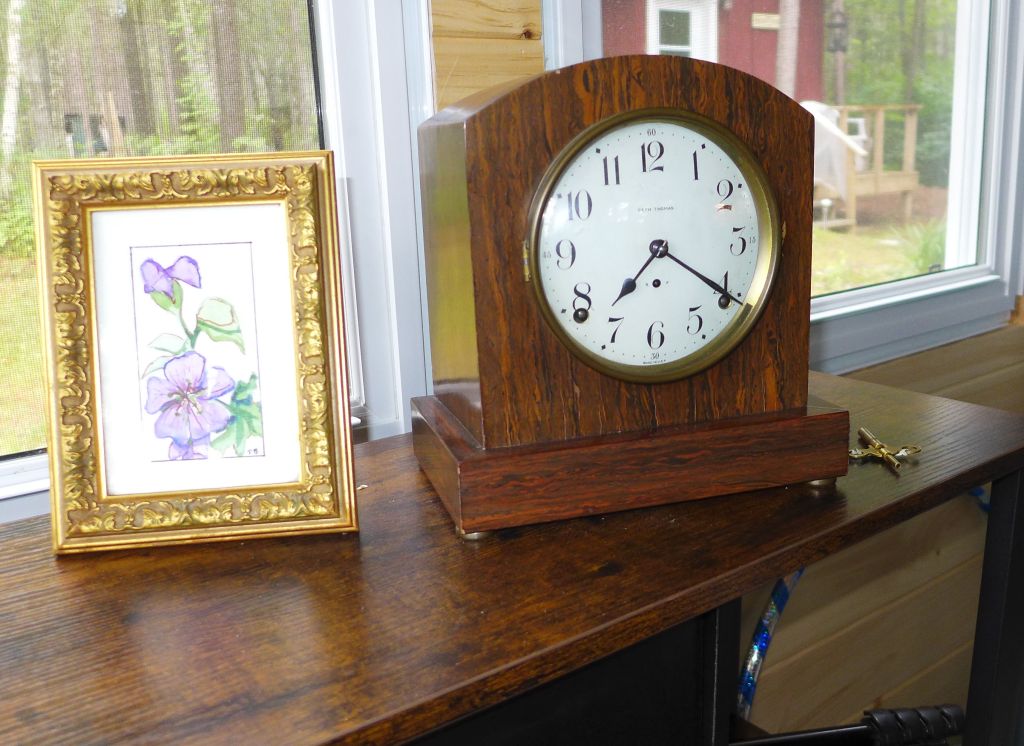Assessing the quality of mantel clocks, whether American or German, involves considering various factors such as craftsmanship, materials used, design, and overall reliability. Both American and German manufacturers have a rich history in clockmaking, and each has its own unique characteristics.
In my collection, I’ve assembled a diverse array of clocks, featuring both American and European examples. Drawing upon my experiences, I can confidently say that when it comes to overall quality, I find myself favouring a typical German clock over its American counterpart.
American mantel clocks are known for their diversity in design and style. Manufacturers like Seth Thomas, Ansonia, Waterbury, Sessions, and others have produced a wide range of mantel clocks with different aesthetic influences. The craftsmanship and attention to detail in many American mantel clocks are often praised. Some American manufacturers have a tradition of incorporating high-quality materials, such as solid wood and detailed finishes.
However, the American mantel clock market has seen fluctuations in quality over time. Some collectors and enthusiasts may argue that the mid-20th century saw a decline in craftsmanship as manufacturers faced increased competition and economic pressures.
I see this clearly in American mechanical clocks made in the 1920s and 1930s. There is a definite step downwards in quality and the goal of production seems to have been to maximize profits.
Germany has a long-standing reputation for precision engineering and quality craftsmanship, and this extends to its clockmaking industry. German mantel clocks, especially those produced by renowned manufacturers like Mauthe, Junghans, HAC, Kienzle, Gustav Becker, and others are often associated with precision movements and reliable timekeepers.
German mantel clocks are also known for their mechanical excellence and commitment to traditional clockmaking techniques. Many German clocks feature intricately designed cases and precise movements, often with a focus on accuracy and durability.
German clock manufacturers maintained their commitment to producing high-quality clocks well into the 1920s and 1930s. Instead of compromising on materials or craftsmanship, they opted to charge a premium for their clocks, ensuring that the level of quality remained consistently high.
A comparison
Let’s compare a common German mantel clock with its American counterpart. Both are in my collection.

The Junghans mantel clock features a design reminiscent of the popular bracket-style clocks that were fashionable several years before its production around 1915. It has a mahogany veneered case, a brass case handle, brass features below the dial, a solid brass dial bezel with beveled glass, and elegant brass feet. Its sturdy time and strike movement, known for its reliability during that era, adds to the clock’s appeal as a dependable clock for the home.

The Seth Thomas clock, manufactured in the United States, showcases a case of inferior quality, a basic brass bezel, and a simulated wood veneer that imitates the appearance of exotic wood. Cost-saving to maximize profit was the ultimate priority during the period of manufacture of this clock from the early 1930s.
Despite this, the clock is equipped with the reliable and durable type 89 movement, which has proven to be bulletproof and dependable over time.
Servicing a German vs an American movement
There are pros and cons to servicing either type of movement. German time and strike movements can be a bit more intricate and finicky, especially when setting up the strike side, as lining up the parts correctly is crucial. Dealing with smaller pivots also increases the risk of damage, bending, or breaking.
Conversely, with American time and strike movements, the larger pivots minimize breakage and it requires brute strength to inflict any damage when manipulating the parts.
However crude an American movement might appear in a side-by-side comparison with a German movement, there is a notable advantage to the former. An American movement (generally speaking) can endure wear much better than a German movement, and it can continue to run effectively even when significantly worn.
That said, when both are set up correctly and any wear is mitigated both American and German movements function reliably for years.
In Summary
Both American and German mantel clocks can offer high-quality options, but individual preferences may vary based on factors like design preferences and specific features.
Collectors and enthusiasts often appreciate the historical context and craftsmanship associated with clocks from both regions.
Obviously, your source of clocks depends on where you live in the world as Canadian and American clocks are widely available to those living in North America whereas the opposite is true for European and Australian residents, for example.
One last thing to note is that precision regulators from both countries are of equal quality. Whether American or German, both exhibit equal precision and performance. They both adhere to the highest standards and can be trusted for accurate timekeeping. It’s worth noting, however, that achieving such precision comes with a correspondingly high price.
These viewpoints represent my personal opinions, and I encourage readers to delve into researching specific models and manufacturers. Making an informed decision should be based on individual preferences and priorities.
